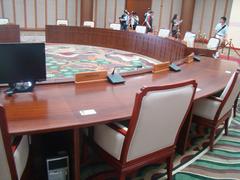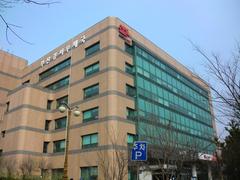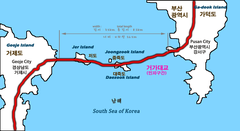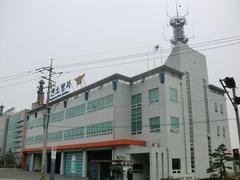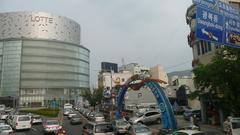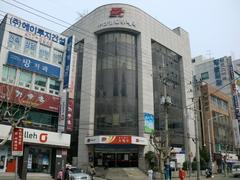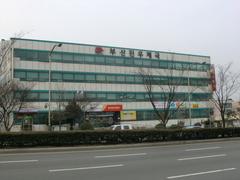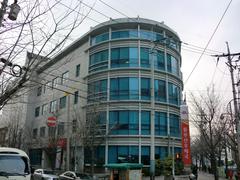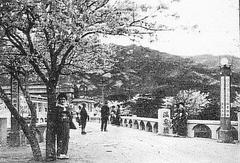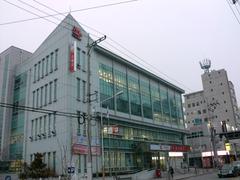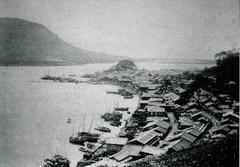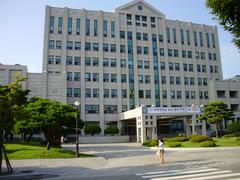
Busan Saha Post Office Visiting Hours, Tickets, and Travel Guide
Date: 03/07/2025
Introduction to Busan Saha Post Office
Nestled in the bustling Saha District of Busan, South Korea’s second-largest city and principal port, the Busan Saha Post Office is more than just a functional postal hub—it is a living emblem of Busan’s historical evolution, community resilience, and modern urban development. Serving as a nexus for domestic and international mail, financial services, and digital conveniences, the post office mirrors the story of Busan’s transformation from its early modernization through the colonial era, wartime upheavals, and the city’s meteoric economic rise during the “Miracle on the Han River.” Its proximity to top attractions like Gamcheon Culture Village and Dadaepo Beach makes it a meaningful stop for travelers seeking both practical services and cultural enrichment. This guide provides comprehensive information on visiting hours, access, services, transportation, and nearby highlights, with resources for further exploration of Busan’s postal and cultural history (Springer Link, OBS Agenda 21 Culture).
Contents
- Historical Background: Busan’s Postal Services in Context
- Visiting the Saha Post Office: Hours, Access, and Services
- Saha Post Office’s Role in Community and Culture
- Nearby Attractions and Practical Travel Tips
- Frequently Asked Questions (FAQ)
- Conclusion and Visitor Summary
- Sources and Further Reading
Historical Background: Busan’s Postal Services in Context
Foundations and Early Growth
Busan has long been a key node of communication and trade. Its postal services originated in the late 19th and early 20th centuries, paralleling Korea’s modernization and Busan’s rise as an international gateway. Under Japanese colonial rule (1910–1945), postal routes and infrastructure were formalized, connecting Busan with domestic and overseas networks. After Korea’s liberation and the Korean War, Busan—serving as a provisional capital—relied on its postal system to maintain vital lines of communication for families, businesses, and government (Springer Link).
Saha District’s Postal Evolution
The Saha District, in Busan’s west, grew from rural settlements into a dense urban area, necessitating expanded postal services. As the district urbanized—especially after the opening of the Seoul-Busan Expressway in 1970—postal infrastructure became instrumental for commerce and daily life, integrating Saha more tightly into the city’s economic and social fabric.
Modernization and Digital Integration
From the 1980s onward, South Korea’s information and communications technology (ICT) boom led to postal modernization: automated sorting, electronic tracking, and integration of banking and government services. By the 2000s, the Saha Post Office offered not only mail and parcels but also digital and financial services, maintaining its relevance in an era of private logistics and online communication (Springer Link).
Visiting the Saha Post Office: Hours, Access, and Services
Visiting Hours
- Monday–Friday: 9:00 AM – 6:00 PM
- Saturday: 9:00 AM – 1:00 PM
- Sunday & Public Holidays: Closed
Note: Specialized services may have unique hours. Confirm via the official website before your visit.
Entry and Ticketing
- Admission: Free (no ticket required)
- Accessibility: The facility is wheelchair accessible, with barrier-free entrances, elevators, and multilingual signage. Staff are available to assist visitors with special needs.
How to Get There
- Subway: Busan Metro Line 1, Hadan or Sinpyeong stations, followed by a short walk or bus ride.
- Bus: Multiple city buses stop near the post office. Use local transit apps for current routes.
- Taxi/Rideshare: Kakao T is widely used and foreigner-friendly.
Services Offered
- Mail & Parcel: Domestic/international mail, express delivery.
- Banking: Basic banking, bill payments, and limited currency exchange.
- Retail: Commemorative stamps, postcards, and local souvenirs.
- Information Desk: Tourist information and assistance (English service may be limited).
Saha Post Office’s Role in Community and Culture
The Saha Post Office is more than an administrative facility—it is a community anchor. It supports local businesses, connects residents, and aids in the distribution of information and cultural materials. The office actively participates in local events and cultural regeneration projects, such as those in Gamcheon Culture Village, and serves as a gateway for both daily life and tourism (OBS Agenda 21 Culture).
Digital innovation has furthered its relevance, with online services for postal tracking, payments, and document handling, in line with Busan’s smart city initiatives.
Nearby Attractions and Practical Travel Tips
Top Sights Close to Saha Post Office
- Gamcheon Culture Village: Famous for its colorful houses, artistic murals, and creative workshops. A must-visit for photography and cultural exploration (Hungry Pursuit, Gamcheon Culture Village).
- Dadaepo Beach: Known for wide sandy shores, the Dadaepo Sunset Fountain of Dreams, and family-friendly leisure (Visit Busan).
- Nakdong Estuary Eco-Center: Wetland conservation, birdwatching, and educational exhibits (Busan Metropolitan City).
- Songdo Beach & Marine Cable Car: Korea’s oldest public beach and a cable car ride with panoramic views (Klook Busan Guide).
Events and Festivals
- Busan Sea Festival: Concerts and water sports at Dadaepo Beach every August (KoreaToDo).
- Busan International Film Festival (BIFF): Asia’s premier film event (Open Korea).
- Dadaepo Sunset Fountain Show: Seasonal music and light display.
For event schedules, consult the official Busan events calendar.
Getting Around & Visitor Tips
- Transport: Use Busan Metro Line 1 or city buses; taxis and the Kakao T app are convenient.
- Language: English signage is common, but translation apps may help with communication.
- Payments: Korean Won (KRW) is standard; credit cards are widely accepted.
- Best Seasons: Spring (April–June) and autumn (September–November) offer mild weather.
- Connectivity: Free Wi-Fi is available in major public spaces.
Dining and Accommodation
- Food: Try Busan specialties like mil-myeon (wheat noodles), fresh seafood, and street snacks near cultural sites (Hungry Pursuit).
- Lodging: Options range from guesthouses in Gamcheon and Saha to hotels in Nampo-dong and Haeundae (Klook Busan Guide).
Frequently Asked Questions (FAQ)
Q: What are the Saha Post Office’s visiting hours?
A: Monday to Friday, 9:00 AM–6:00 PM; Saturday, 9:00 AM–1:00 PM; closed Sundays and holidays.
Q: Is there an entrance fee?
A: No, visiting and using postal services are free.
Q: Can I use the post office for international mail?
A: Yes, international postal and parcel services are available.
Q: Is the facility accessible for people with disabilities?
A: Yes, it features ramps, elevators, and barrier-free access.
Q: Are guided tours provided?
A: No official tours, but staff can assist with information. Some local cultural tours may include a stop at the post office.
Q: What nearby attractions should I visit?
A: Gamcheon Culture Village, Dadaepo Beach, Nakdong Estuary Eco-Center, and Songdo Beach are all easily accessible.
Conclusion and Visitor Summary
The Busan Saha Post Office is a testament to the city’s dynamic history, community spirit, and ongoing modernization. With accessible hours, free entry, and a full range of postal and financial services, it welcomes both locals and tourists. Its location amid Saha’s vibrant neighborhoods means visitors are never far from Busan’s most iconic cultural and natural attractions. Whether mailing a postcard, exploring nearby sites, or soaking up local history, the Saha Post Office is a valuable and meaningful stop on any Busan itinerary.
For more travel resources, download the Audiala app, follow our channels for event updates, and consult the Busan Metropolitan City Tourism portal.
Sources and Further Reading
- Springer Link
- OBS Agenda 21 Culture
- Busan Metropolitan City Tourism
- Saha District Official Website
- Namu Wiki: Saha District
- Gamcheon Culture Village
- Hungry Pursuit: Gamcheon Culture Village
- Visit Busan
- Klook Busan Guide
- KoreaToDo: Busan Festivals
- Open Korea: Busan History


